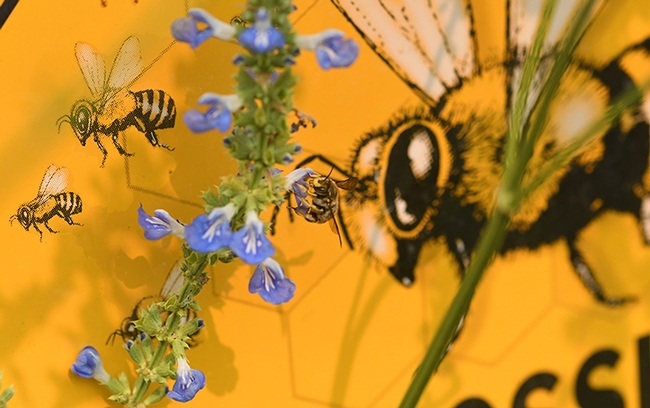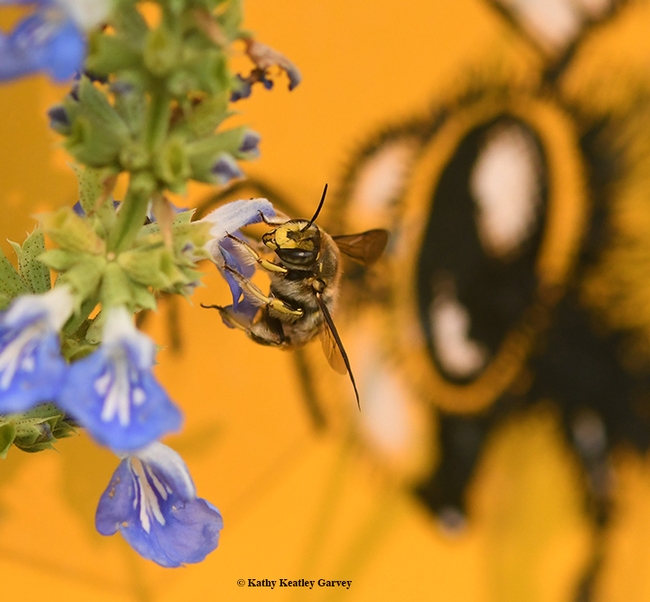Bee-hold, the eye of a bee-holder.
When you have a "Bee Crossing" sign in your pollinator garden, odds are that bees will cross right in front of that sign.
And it's not always a honey bee.
European wool carder bees (Anthidium manicatum) zip around our blue spike sage (Salvia uliginosa), chasing other bees away and trying to save it for "their girls"--per chance to mate with them.
In the photos below, a male European wool carder bee paused to sip some nectar before continuing his rounds.
Little did he know, a honey bee (on the sign) was staring right at him.
As its name implies, the European wool carder bee, Anthidium manicatum, is a native of Europe. American entomologists initially detected his "immigrant ancestor" in the United States (New York) in 1963, and the species spread west. The carder bee (so named because the female "cards" fuzz from plants for her nest) was first recorded in California (Sunnyvale) in 2007.
Attached Images:

"Bee Crossing" signs are favorites in pollinator gardens, not for the bees, but for the humans. (Photo by Kathy Keatley Garvey)

Sign of the times: A European wool carder bees (Anthidium manicatum) is surrounded by honey bees on the "Bee Crossing" sign. (Photo by Kathy Keatley Garvey)

Close-up of European wool carder bee nectaring on a blue spike salvia. The eye of a honey bee adds to this photo. (Photo by Kathy Keatley Garvey)